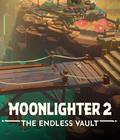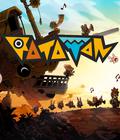A spiritual successor can be difficult to get right. Fans can be picky when they expect it to carry the spirit of a previous franchise, especially when that franchise is well beloved. When you're discussing something as crazy as Danganronpa, the expectations are even higher. The Hundred Line: Last Defense Academy has a lot of expectations on its shoulders, being a team-up between Danganronpa's KazutakaKodaka and Zero Escape's Kotaro Uchikoshi. The good news is that it is exactly as insane, ambitious and over the top as expected from those two. The bad news is ... well, it's exactly as insane, ambitious, and over the top as you'd expect from those two.
Last Defense Academy puts the players in the role of Takumi, a young boy who's living peaceful days alongside his childhood friend in an underground shelter known as the Tokyo Residential Complex. Unfortunately for Takumi, that peace is shattered when creatures appear and attack the shelter. A bizarre creature called Sirei forces Takumi to unleash hemoanima, which is a power within his blood, to fight them. It saves his life but forces him to confront the truth of the world: The Earth is under attack by invaders, and only those with hemoanima can face them. Takumi is transferred to a Last Defense Academy, where he's given a task: Protect the academy for 100 days, and a special weapon will activate to defeat the invaders. Succeed, and he can return to his normal life. Fail, and mankind is doomed.
It's very difficult to discuss Last Defense Academy's plot without going into spoilers. Even trying to be vague makes it possible that I'll make references to the story, so if you want to remain unspoiled, I recommend skipping a couple of paragraphs ahead.
For the most part, I really enjoyed the story in Last Defense Academy. It maintains the same constant insanity of something like a Dangan ronpa, with a barrage of nonstop twists and turns. Like those games, it tends to start off simple before going off the rails, which can be both a strength and a weakness. When I started Last Defense Academy, I found the plot to be a bit weak. It felt like it was trying too hard to escape the shadow of Danganronpa, right down to having a character whose primary personality trait was complaining that the game wasn't Danganronpa and it would be better if it were. The archetypes felt thin, and I wasn't sure I liked most of them. They get better as the game progresses and they're allowed to be their own characters, but some characters end up far less developed. It's a game that takes a long time to get going, but once it does, it's an unstoppable freight train of insanity that Danganronpa fans will adore.
There's a nonlinear element to the game where you can make choices that alter the plot, and it's difficult to state how huge the plot twists are. There are multiple routes that can have lengthy subroutes. When you go down one path, it's frequently an entire game's length of path split. The game has over 100 different endings, and while a number of those are spread among specific path splits, many require you to reach the end of the game to see the difference between them. It's absurdly ambitious and takes a long game and makes it a monumental task, but I'm sure once the full version is out, it'll be much easier to condense things to the necessary path.
One thing that works against it is pacing. It takes a long while to get going, and once it does, the plot is given in fits and bursts, with a lot of redundant revelations because it's built around gradually piecing together bits of information from the multiple path splits. This means the further you get into the game, the more you'll see the same things over and over. In some cases, the game plays with this, such as providing contradictory information on two different routes, but it means you're going to see the characters discover the same Dark Secret multiple times, and it can be difficult to fast-forward past it, since the game isn't clear when something is new and when something isn't.
If there's one thing I really disliked, it is that Last Defense Academy gets extremely dark in ways I don't always feel are appropriate to the surroundings. There's at least one plot arc that was supposed to be disturbing but spent so much time lavishing on needless fan service that it undercut what otherwise could've been effective horror and made everything feel gross. The fan service leaves several potentially interesting characters feeling like one-note jokes unless you stumble into the route where they get character development.
The gameplay in Last Defense Academy also resembles Danganronpa in a number of ways. It is set entirely within the school building that you explore by moving around a 2D environment. Each day consists primarily of listening to the plot of the day. Frequently, you're allowed to engage in free time, during which you can hang out with characters to level up Takumi's social stats, give them gifts to make them like you more, or explore the land outside of the academy. This continues until the next defense battle.
Defense battles are what really make Last Defense Academy feel different from its spiritual ancestor. Rather than something like a class trial, you have a full -fledged strategy-RPG gameplay mechanic. The titular academy comes under attack from the invaders who are trying to break inside. The only thing stopping them is a powerful barrier emitted by several generators located outside the school. Your team's goal is to defeat the invaders before they can destroy the generators, with most fights consisting of multiple waves.
Combat is straightforward but has a pleasant amount of tactical depth. You deploy the entire available squadron of soldiers at once, usually positioned in different locations around the school map. During each turn, you have a specific number of AP points to command the soldiers to take an action, ranging from moving to attacking to defending. Once a character has taken one action, they become "fatigued," which means they can perform another action but lose almost all of their mobility in exchange.
Enemies come in roughly three types: minions, mid-bosses and bosses. Minions only have a single hit point and die from any attack, but they arrive in huge swarms. Mid-bosses have several HP and require multiple or stronger attacks to take down, but defeating one refunds you an AP. Bosses are big, dangerous and usually have distinct gimmicks.
In exchange, your characters also each have a cool, distinct gimmick. One character is a pacifist who doesn't like fighting, so their ability is the power to attract enemy attacks to themselves. Taking damage earns them a special stacking damage buff that they can cash in for a strong attack at the cost of losing their next turn. Another is a sniper who can shoot from a distance but severely loses damage if they move before attacking. Some characters specialize in single target damage, and others specialize in clearing large swarms of enemies.
In addition to the character's abilities, there is also a voltage meter that builds as you deal damage and defeat enemies. Like AP, voltage is shared among the party. Once you reach at least 100 voltage you can spend it to give your characters permanent (for the rest of the battle) buffs like increased damage, the ability to counterattack, or a free attack on enemies within range. You can also spend 100 voltage to do immensely powerful special moves that are frequently enough to wipe out entire swarms of enemies but leave that character stunned for the rest of the turn and the next turn.
One of the more intriguing elements of the game is that your character dying isn't just expected, it's an advantage. When a character gets below five health, they enter a "near death " state, and while in this state, they can activate their voltage special move without needing any voltage. However, doing so kills the character and removes them from battle for the rest of the wave. In exchange, you earn 100 bonus voltage, get to use the special attack, and are even given a score reward at the end of combat.
This leads to an interesting set of tactics early on, before you've really grasped the combat system. You're asked to consider who is worth sacrificing versus who is worth keeping around, especially since healing is relatively limited, and not blowing up an ally might lead to them dying anyway — but without the benefit of the bonus attack. Since characters revive after every wave (rather than every battle), that means there's relatively little punishment for doing so. It depends on how callous you want to be with your allies' lives.
The biggest problem with the combat system is that it ends up being redundant. It's a pretty cool system that is a lot of fun to engage with, but beyond a certain point, it is something you literally gain the ability to skip past in most situations, which drains away some of the fun. You'll gradually figure out how to min-max voltage use and heal stun, which leads to spamming a special attack with Takumi versus making the best use of each character. It's still a fun combat system, and by the time it wears out its welcome, you're likely at the point when the visual novel side of the game overtakes the rest.
Visually, Last Defense Academy has a lot in common with Danganronpa, with the story primarily told through paper doll-style visual novel cutouts and a few custom-drawn scenes or 3D animated cut scenes. It lacks the stylized violence — LDA can get exceedingly gory — but otherwise feels familiar and does a good job with what it has. The voice acting and music are both excellent, with most of the dub cast doing a phenomenally good job with some exceedingly difficult roles. There are a couple of characters I feel are total duds, but they're thankfully not the most important ones.
The Hundred Line: Last Defense Academy is an absurdly ambitious, delightfully over-the-top and genuinely enjoyable game to play. It captures the same raw insanity of Danganronpa but has a level of raw excess that makes it stand out from the shadow of its big sibling. It does have missteps, including some content which is a tad too uncomfortable for its own good, and the RPG elements end up subsumed by the visual novel gameplay, but if you're a fan of Danganronpa, then this spiritual successor is well worth a look.
Score: 8.5/10
More articles about The Hundred Line -Last Defense Academy-











 The Hundred Line -Last Defense Academy- is an adventure game featuring tactical RPG and adventure elements, presenting a chilling, tense storyline leading players to despair-filled endings.
The Hundred Line -Last Defense Academy- is an adventure game featuring tactical RPG and adventure elements, presenting a chilling, tense storyline leading players to despair-filled endings.





































